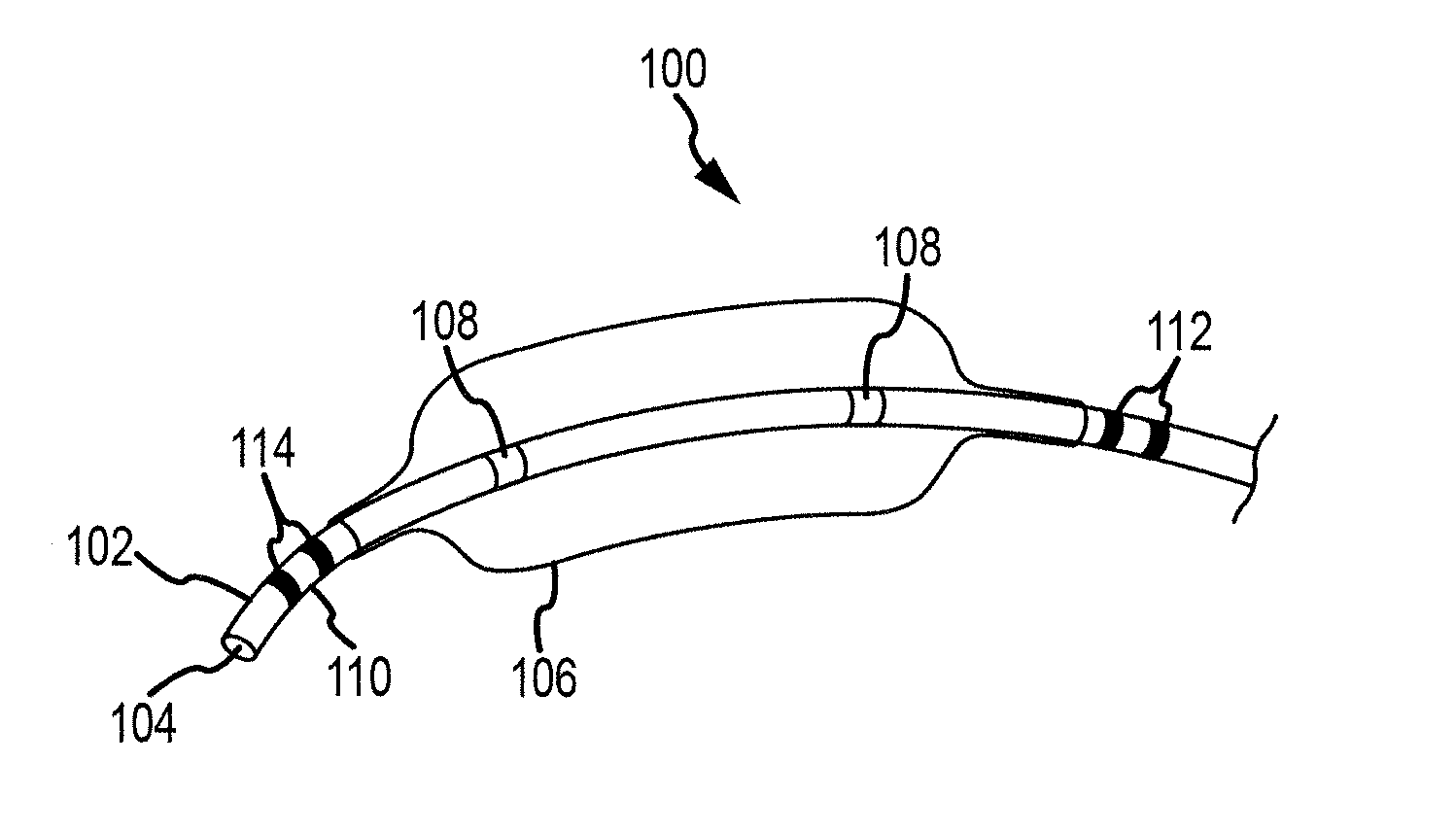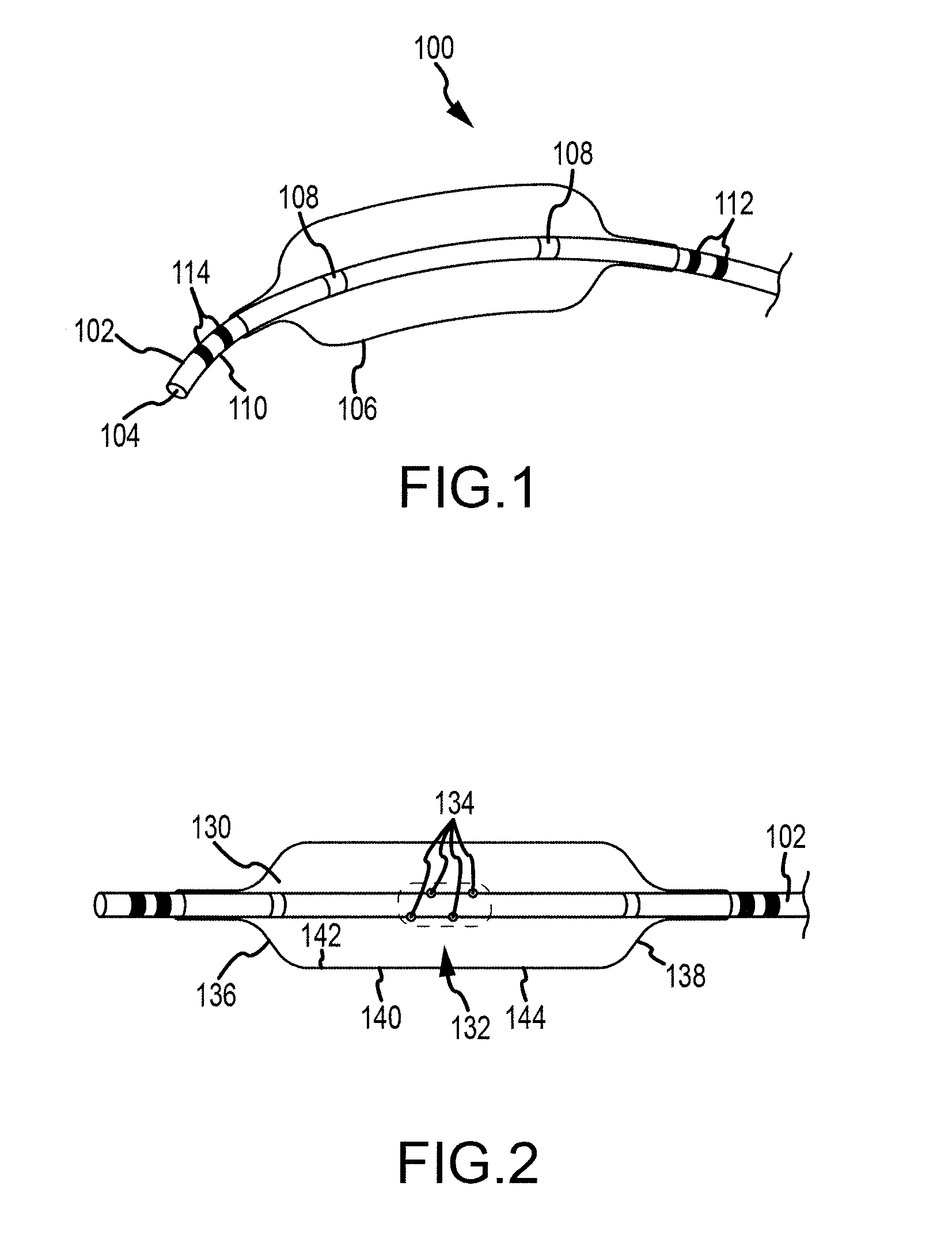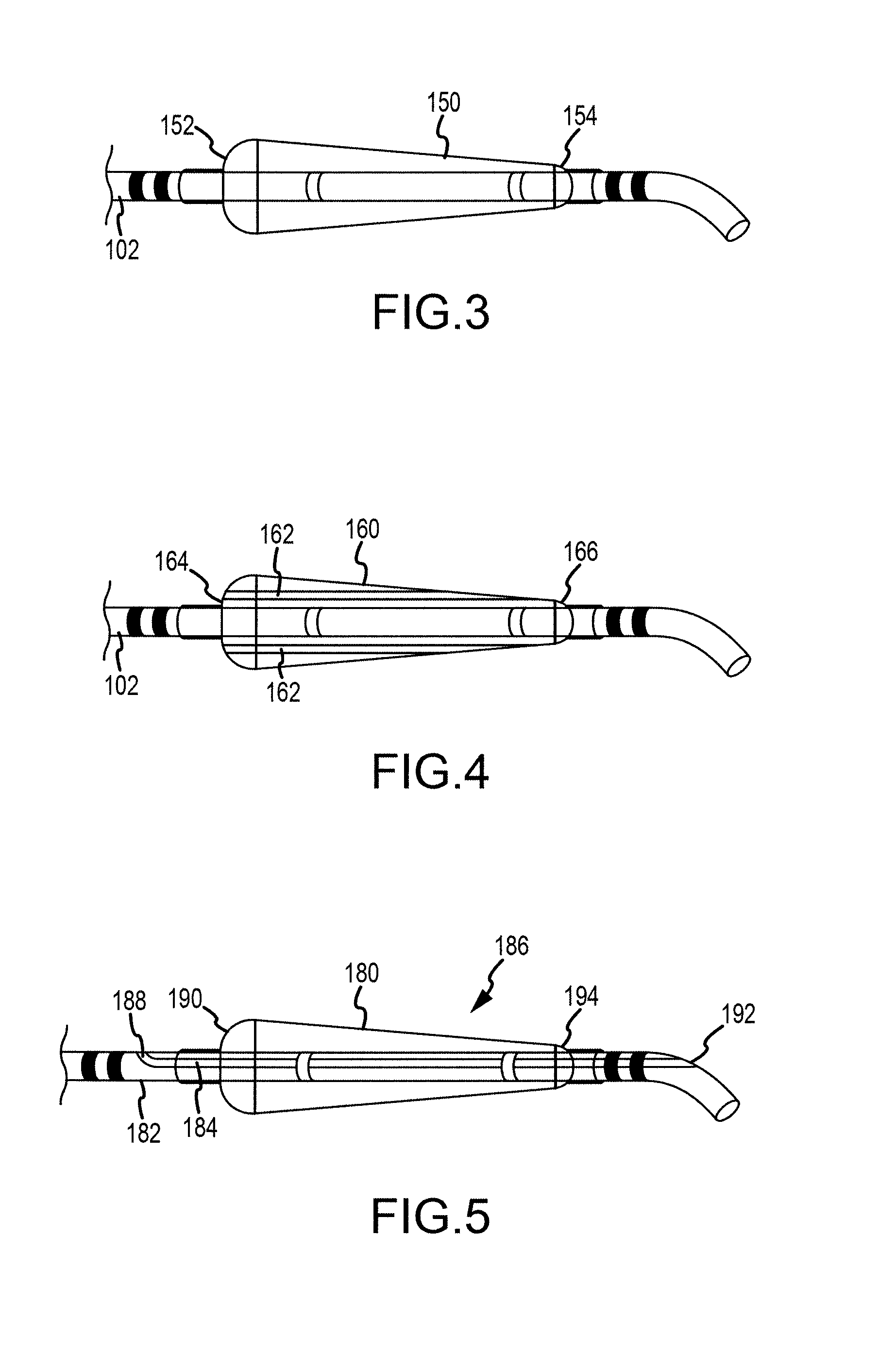Methods and systems for occluding vessels during cardiac ablation incuding optional electroanatomical guidance
a technology of occlusion and cardiac ablation, applied in the field of cardiac ablation, can solve the problems of difficult to create transmural lesions in this region, inability to properly pump out blood, and ineffective heart beating, so as to limit or minimize the creation of stasis and thrombosis, preserve the degree of perfusion through the vessel, and enhance the dwell time
- Summary
- Abstract
- Description
- Claims
- Application Information
AI Technical Summary
Benefits of technology
Problems solved by technology
Method used
Image
Examples
example a
[0074]Experiments were conducted on nine female pigs using the above identified occlusion system. Vascular access was obtained via standard angiography sheaths in the right femoral artery (8Fr, Fast Cath™ model, available from St. Jude Medical, Inc. of Little Canada, Minn.) and the right internal jugular (10Fr).
[0075]Transseptal access was obtained under fluoroscopic guidance with a Daig SL-1 sheath (available from St. Jude Medical, Inc.). A quadripolar electrode, placed in the right coronary cusp, was used as a reference for the electroanatomical mapping system (EnSite NavX, St. Jude Medical, Inc.). Separate geometries and associated electrical activity of the left atrial appendage, the right superior pulmonary vein, the inferior pulmonary trunk, and the left atrial body were acquired using a circular mapping catheter.
[0076]Ablation was performed using a 3.5 mm Celsius Thermo-Cool (available from Biosense Webster, Inc. of Diamond Bar, Calif.). A maximum of 35 watts power was used i...
example set b
[0085]The following numbered sentences are intended as illustrative and not limiting as to the subject matter contemplated per this disclosure and to provide some context to those of skill in the art as to the procedures contemplated herein.
[0086]1. A method for ablating a portion of myocardium located adjacent to a coronary vessel of a heart, said method comprising:
[0087]inserting an occlusion catheter having an expandable film of material around a distal portion thereof into a coronary vessel of a heart, wherein said occlusion catheter includes a reinforcing layer of material within at least a portion of a shaft of the catheter near a proximal end of the expandable film of material;
[0088]one of at least partially and fully occluding blood flow within the vessel using the occlusion catheter with the expandable film of material in an expanded state disposed in contact with one of the ostium of the vessel and an inner surface of the vessel;
[0089]inserting an ablation catheter into a ...
PUM
 Login to View More
Login to View More Abstract
Description
Claims
Application Information
 Login to View More
Login to View More - R&D
- Intellectual Property
- Life Sciences
- Materials
- Tech Scout
- Unparalleled Data Quality
- Higher Quality Content
- 60% Fewer Hallucinations
Browse by: Latest US Patents, China's latest patents, Technical Efficacy Thesaurus, Application Domain, Technology Topic, Popular Technical Reports.
© 2025 PatSnap. All rights reserved.Legal|Privacy policy|Modern Slavery Act Transparency Statement|Sitemap|About US| Contact US: help@patsnap.com



